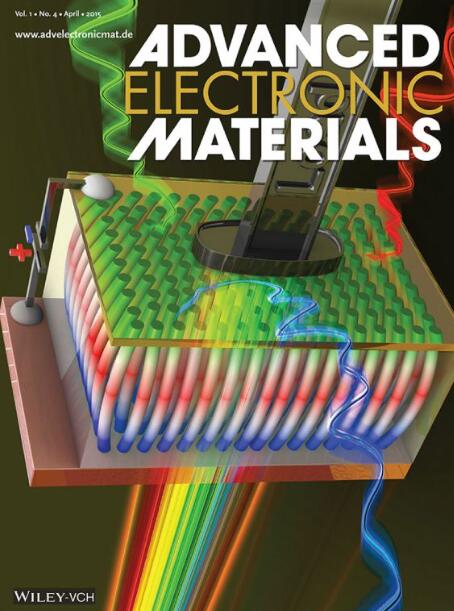基于钙钛矿/氧化钼-硫化钼复合异质结体系的高鲁棒双忆阻器件
IF 5.3
2区 材料科学
Q2 MATERIALS SCIENCE, MULTIDISCIPLINARY
引用次数: 0
摘要
卤化物有机-无机钙钛矿(HOIPs)是一类很有前途的材料,用于神经形态计算和处理系统,展示了各种电阻开关(RS)机制。hoip已被用作二端和三端突触器件的有源层,在速度和能耗方面表现优异。然而,卤化物钙钛矿的环境稳定性和再现性较差。在这项工作中,展示了基于两个有源层形成堆叠异质结的高鲁棒双忆阻器。特别地,功能层由氧化钼-硫化钼化合物(MoO3 - MoS2)和沉积在上面的四重阳离子钙钛矿(RbCsMAFA)组成,具有良好的能带对准性,适合特定应用。基于MoO3‐MoS2/RbCsMAFA异质结的双忆阻器表现出令人印象深刻和稳定的电阻开关行为,其耐久100次,高保留时间为2 × 104 s,高环境稳定性使其忆阻行为保持1个月,并具有优异的人工突触功能。该器件还具有良好的热稳定性,在85°C下保持忆阻特性,以及在恒定光照下具有改善的ON/OFF比的良好光子忆阻行为。本文证明了所提出的双忆阻器是人工突触和神经形态计算系统的一个有希望的候选者。本文章由计算机程序翻译,如有差异,请以英文原文为准。
Highly Robust Double Memristive Device Based on Perovskite/Molybdenum Oxide‐Sulfide Compound Heterojunction System
Halide organic–inorganic perovskites (HOIPs) are a promising class of materials for neuromorphic computing and processing systems demonstrating a variety of resistive switching (RS) mechanisms. HOIPs have been used as active layers in two‐ and three‐terminal synaptic devices reporting high performance in metrics of speed and energy consumption. Nevertheless, halide perovskites suffer from poor ambient stability and reproducibility. In this work, a highly robust double memristor based on two active layers forming a stacking heterojunction is demonstrated. In particular, the functional layer consists of a molybdenum oxide‐molybdenum sulfide compound (MoO3 ‐MoS2 ) and a quadruple cation perovskite (RbCsMAFA) deposited on top showing favorable band alignment for the specific application. The double memristor based on the MoO3 ‐MoS2 /RbCsMAFA heterojunction exhibits impressive and stable resistive switching behavior with endurance of 100 cycles, high retention of 2 × 104 s, high environmental stability maintaining its memristive behavior for 1 month, and excellent artificial synaptic functions. The robust device also exhibits good thermal stability maintaining the memristive characteristics at 85 °C, as well as good photonic memristive behavior with an improved ON/OFF ratio under constant illumination. Here it is proven that the proposed double memristor is a promising candidate for artificial synapses and neuromorphic computing systems.
求助全文
通过发布文献求助,成功后即可免费获取论文全文。
去求助
来源期刊

Advanced Electronic Materials
NANOSCIENCE & NANOTECHNOLOGYMATERIALS SCIE-MATERIALS SCIENCE, MULTIDISCIPLINARY
CiteScore
11.00
自引率
3.20%
发文量
433
期刊介绍:
Advanced Electronic Materials is an interdisciplinary forum for peer-reviewed, high-quality, high-impact research in the fields of materials science, physics, and engineering of electronic and magnetic materials. It includes research on physics and physical properties of electronic and magnetic materials, spintronics, electronics, device physics and engineering, micro- and nano-electromechanical systems, and organic electronics, in addition to fundamental research.
 求助内容:
求助内容: 应助结果提醒方式:
应助结果提醒方式:


